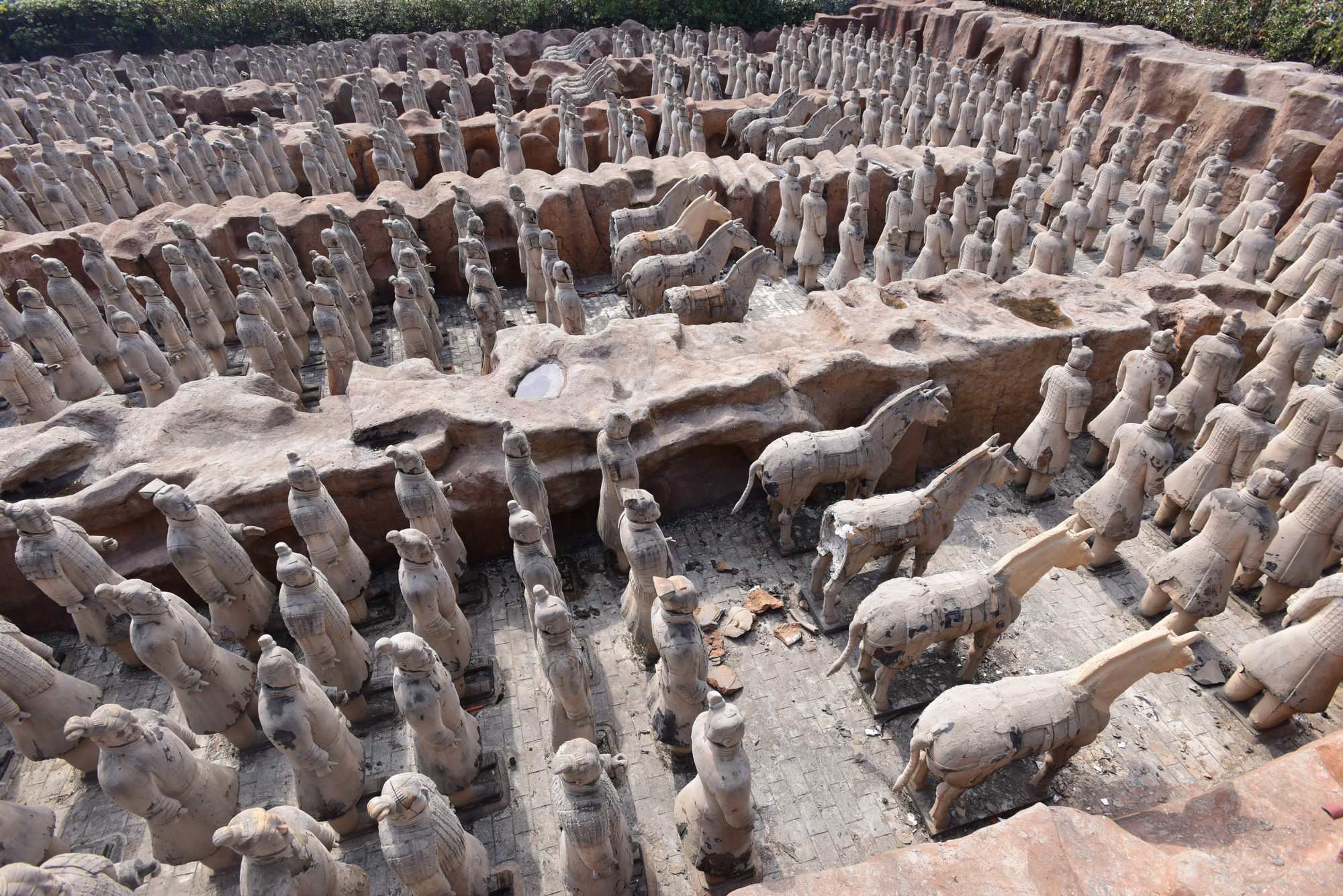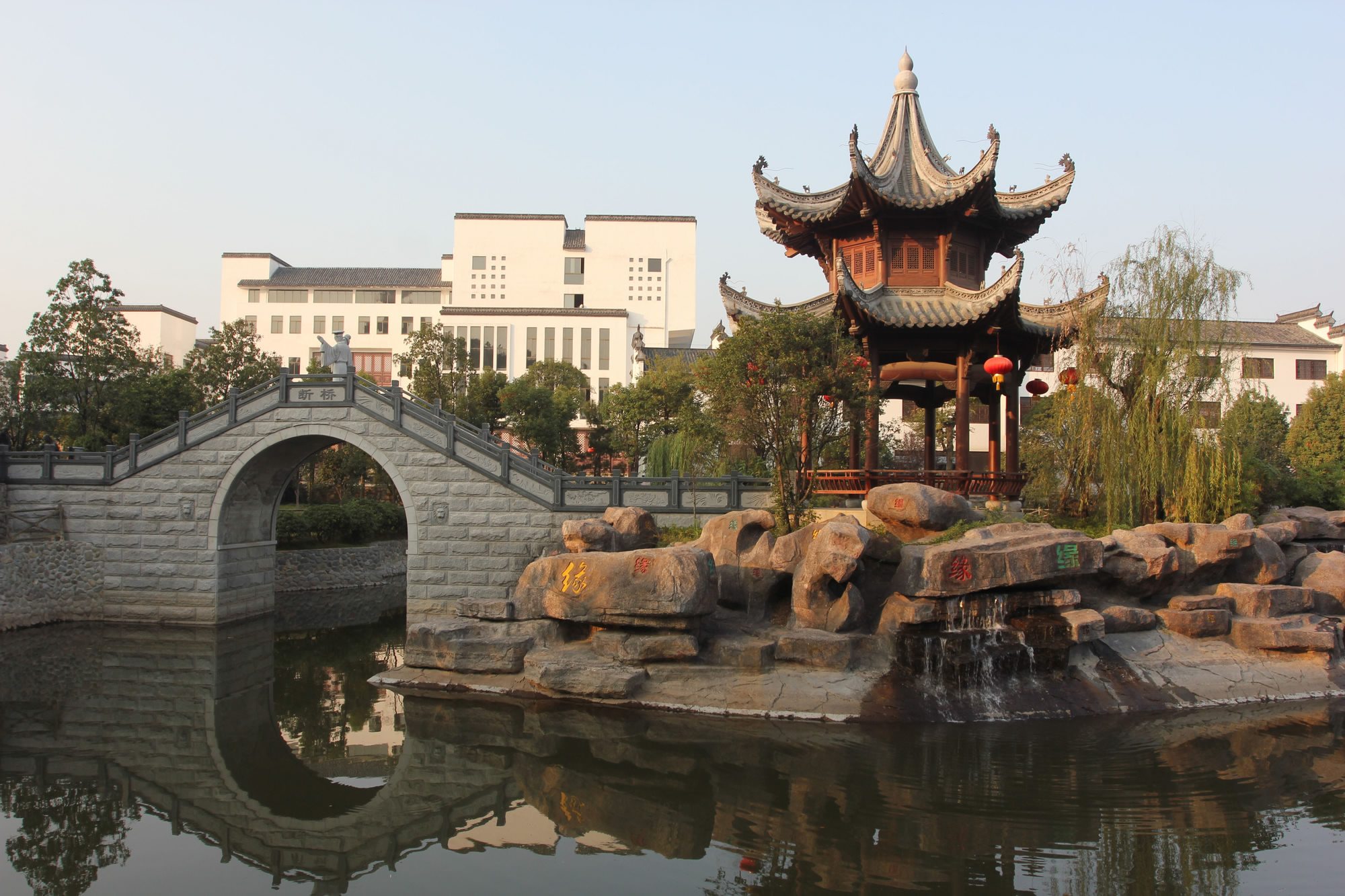The controversy sparked by replica terracotta warriors in a theme park in China’s central province of Anhui continues to brew in the public sphere.

CFP Photo
The Executive Director of China Cultural Expo Park, Yin Zhaoping, said he is yet to receive any legal letter from Emperor Qinshihuang’s Mausoleum Site Museum in China’s northwestern Shaanxi Province – home of the terracotta army – and threatened to take legal action himself.
“We didn’t infringe on their trademark. Terracotta figurines are not their patent, which can be made anywhere. We want to showcase the grand spectacle when Emperor Qinshihuang conquered the six kingdoms. There had to be horses and soldiers,” Yin said.
“We can also file a lawsuit against the museum for disrupting our business without on-spot investigation.”
The theme park comprehensively showcases China’s cultural heritage with gardens, streets, pavilions, and galleries. The full-scale terracotta warriors are only a small part of the venue, which some have compared it to the “Window of the World” in the southern city of Shenzhen, where visitors can take a "world tour" by visiting miniature landmarks, such as the Eiffel Tower.

CFP Photo
Wei Guo, Director of Anhui Copyright Protection Committee, defended the theme park arguing that no trademark has been violated.
“First of all, it is worth discussing whether it is appropriate to register historical sites or mankind's cultural relics as trademark. Secondly, there are specific regulations in terms of trademark protection. The theme park did not use trademarks registered by the museum. Copying terracotta warriors and trademark infringement are two separate things,” Wei said.
However, Liu Zhihan, Assistant Researcher at the Center for IPR Studies of China University of Political Science and Law, said Emperor Qinshihuang’s Mausoleum Site Museum has the right to ask for compensation because the theme park is making money by copying the real terracotta warriors, which is a violation of the country's Anti-Unfair Competition Law.

CFP Photo
In recent years, China’s tourism industry has seen a meteoric growth and boosted provincial economies. However, plenty of practices to attract tourists have drawn heat.
Replicas of European towns, Egypt’s Sphinx and other international sites can be found in China, and are one admission ticket away from being accessible. Some argue this helps people see different parts of the world without traveling far and spending a fortune, but others criticize the knock-offs are inconducive to China’s cultural innovation and heritage.
The theme park in Anhui is currently expanding and plans to occupy 180 acres with a total investment of 1.8 billion yuan (about 270 million US dollars). It is also rated as a 4A tourist attraction – the second highest class in Chinese authorities’ rating system.
The need to boost foot traffic has been more pressing than ever. A mere 10 percent of the 2,700 theme parks in the country were reportedly making profits last year.
At the same time, analysts predict that China’s amusement park market is set to become the world’s largest by 2020, requiring a more creative approach to the concept of leisure and entertainment than imitating already-existing masterpieces.









